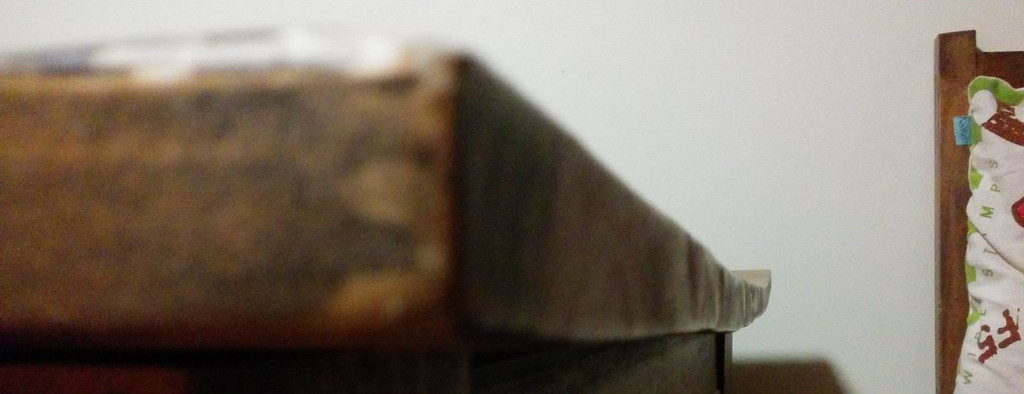Make a flat table
without breadboard ends
A little while back, there was a post or /r/woodworking/ detailing the build of a table that had fake breadboard ends. I commented “don’t bother with breadboard ends if you aren’t going to do them correctly. Done wrong they hurt rather than help the table deal with humidity.” Last week, another user who saw the comment asked the obvious question. “If you don’t have the tools or skills to make proper breadboards, how do you keep your table flat?”
It turns out keeping a table-top flat isn’t that hard, if you know a few simple things.
The most important thing is to know that flat sawn boards always cup away from the center of the tree. If you look at the end grain you can figure out which face of your board was originally facing the inside of the tree and which was facing the outside of the board.
This means that if you want a single board to remain flat, all you have to do is keep the inside center from cupping inward and the outside edges from cupping outward. It might be easier to imagine with with a more concrete example. Imagine you’ve found a single board wide enough to use for your table top. You make your legs and skirt, and are ready to attach the top. You could just place the board down with the inside facing up, and screw it down in the middle. The screws keep it from cupping upward, and the legs and frame keep the edges from cupping downward. You don’t need worry about the edges cupping upward, because they never will.
This isn’t ideal because the table isn’t very securely attached to the legs and frame, so you need find a way to attach the edges to the frame. A lot of tables these days are just screwed on at the edges, while the table won’t explode, it might just pull some of its joints apart and eventually fall to pieces.
While not every location or environment is going to have the same amount of seasonal humidity change, it is dumb to pretend like your furniture will never move. A good practice is to plan for half an inch difference between the width of your table top between winter and summer or if the table is moving from one place to another. It is extremely important to remember If the board can’t cup, it will expand linearly.
You need a way to firmly attach the table to the frame and legs, while allowing each side to move a quarter of an inch. If your design allows it, a simple fix is to use washers on your screws and make an oval hole in your frame for the screw to go through. This allows the top to expand and contract and as that happens the screw slides along the oval hole. This is fantastic, but most table designs will need something different.

Above you see three different types of table connectors. These are not the only options, but they what you should be thinking of. The metal ones on the left and the wooden ones on the right work similarly. When used at the end, they slide along a groove, and when used on the side they move in and out of a groove. The middle one screws into the top of the frame and then into the bottom of table top.
Wait! I hear you say. I can’t make my table top out of a single board. This means it is time to glue some boards together. If you follow one simple rule, everything will be fine. Glue up your boards so the inside faces all face the same way. If all your boards face the same way then they will act like a single board and you can apply all of what I said above.
You will occasionally, see people recommending that you alternate sides with each board, unless you want a wavy table top, do not do this. There is an exception to this rule. If you are capturing the ends of your panel in a groove, then the groove will serve to hold the entire board flat. This means if you are using breadboard ends or frame and panel work, then you can glue up your panel however you want.
References:
I didn’t come up with any of this. I have experience with wood movement, but others are due more credit than I. Everything I’ve written here is better explained in chapter 5 of With the Grain by Christian Becksvoort.
